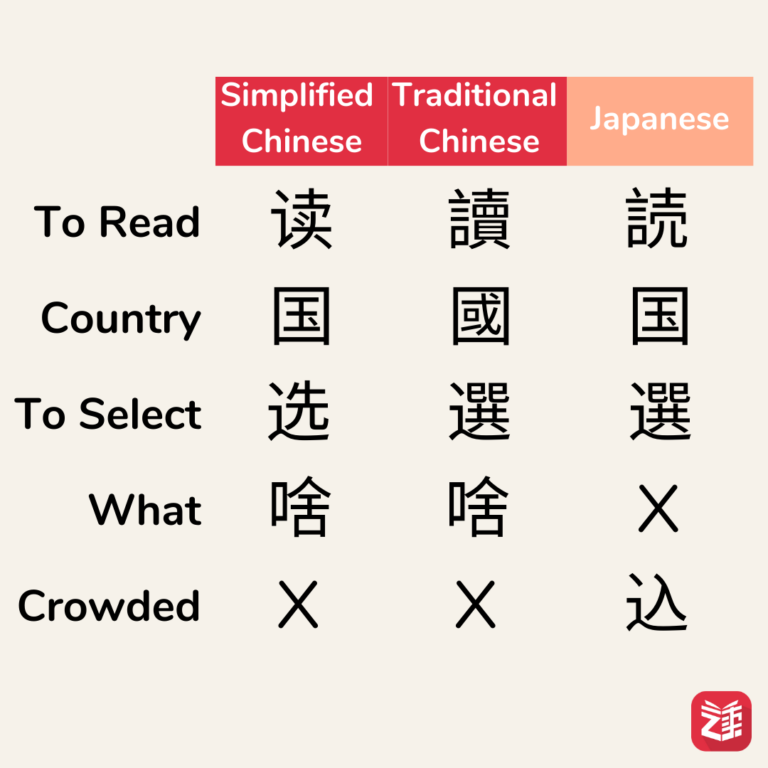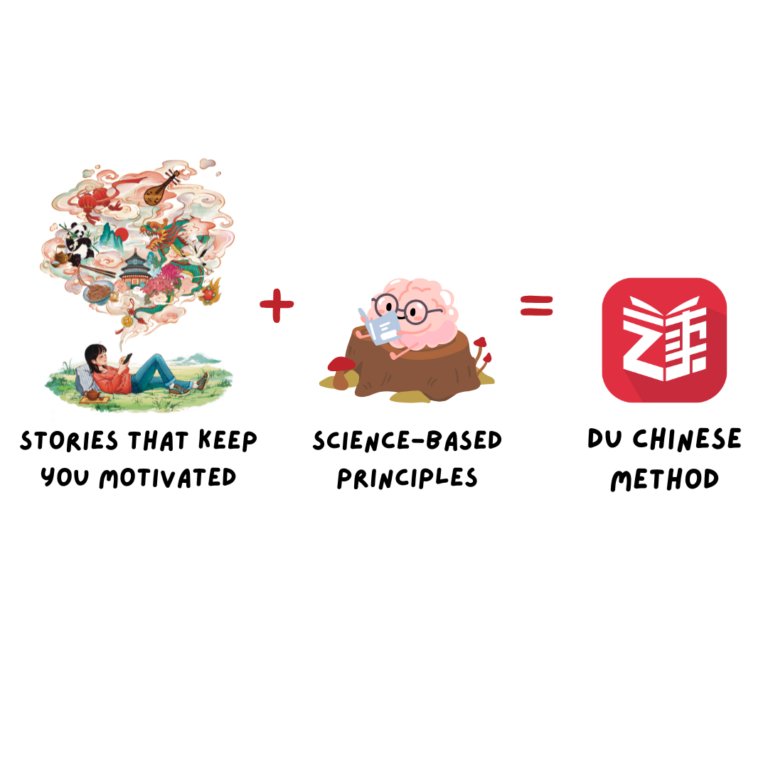Is it better to learn Chinese or Japanese?
The cultures of China and Japan, with their beautiful calligraphy, stunning architecture, long history and influence on the global stage attract learners from around the world to try their hand at these fascinating languages. While both language learning experiences are truly rewarding and interesting, each comes with different challenges. If you’re on the fence about which language to start with, getting a lay of the land is the first step in deciding which is best for you!
Two different worlds of language
First of all, while it might be easy to assume that Japanese and Chinese might share some kind of DNA, they come from completely different language families, which means that Chinese is about as similar to Japanese as English is!
That being said, due to their proximity to one another, the two languages have borrowed vocabulary from each other. More specifically, more than 50% of Japanese words are borrowed from Chinese, and about 70% of modern Chinese words relating to sociology, humanities, and natural science are borrowed from Japanese.
In essence, it’s best to think of Chinese and Japanese as two completely separate and unrelated languages that have borrowed from each other over their long history. This means that learning one can help you learn another, but only when it comes to specific vocabulary. Things like grammar and pronunciation won’t have any correlation.
Compare and Contrast
As we’ve already mentioned, Chinese and Japanese are very different languages. There are significantly more differences between them than similarities.
Differences
To better unpack between the two languages, we’ll break them down according to writing, grammar, and pronunciation.
Writing System
While both languages use Chinese characters, the overall structure of their writing systems are completely different. While Chinese uses Chinese characters only, Japanese has a total of 3 sets of characters that work in tandem to make up its system: Two sets of symbols used for conveying pronunciation, similar to alphabets, and Chinese characters, Kanji, which are used to express meanings and concepts. As a general rule, if you see text that is composed entirely from Chinese characters, you can be certain it’s Chinese. If you see text that mixes Chinese characters with other symbols, you’re probably looking at Japanese.

Grammar
One of the most dramatic differences between Chinese and Japanese can be found in their grammar. First of all, the basic word order is opposite between the two languages, with Chinese operating under a subject, verb, object (SVO) word order (similar to English), and Japanese using a subject, object, verb (SOV) order. Notably, Japanese also has a system for verb conjugation, while Chinese does not.

Pronunciation
Pronunciation is another point where Chinese and Japanese are almost impossible to compare. For starters, Chinese is primarily composed of words that are either one or two syllables, while Japanese words are usually composed of more “moras” (syllables). This, however, pales in comparison to the biggest difference between the two– that being that Chinese is a tonal language, while Japanese is not. This gets a bit complex, as Japanese pronunciation includes something called pitch accent, but I would argue that tones are one of the most prominent and unique aspects of Chinese pronunciation. Essentially, the inflection of a Chinese syllable can have a massive impact on the meaning of a word.

Other Differences
A final key difference has to do with how formality is expressed. While there are certainly ways to express politeness and respect in Chinese, the Japanese system of formality is embedded very deeply into the language, with its effect on verb conjugation standing out the most.

Similarities
Use of Chinese Characters
Both Chinese and Japanese use Chinese characters (“hanzi” in Chinese, “kanji” in Japanese). While this is a fairly important connection between the two languages, there’s still quite a bit of nuance to unpack.
First of all, any given character might be written in a different way depending on the language, or not appear at all. The two languages also vary greatly in how exactly these characters are used. Chinese, for example, will often have just one, monosyllabic pronunciation of a character, while Japanese kanji often have multiple readings, some with multiple syllables.

Shared Vocabulary
The amount of common vocabulary in between the two languages means that learning one will often help you learn the other. This overlap is so prominent that native Chinese speakers will sometimes be able to read Japanese sentences by piecing together the Chinese characters they can recognize. It is important to note, however, that this is only really obvious in writing. Shared vocab will often sound completely different in the two languages.
First of all, any given character might be written in a different way depending on the language, or not appear at all. The two languages also vary greatly in how exactly these characters are used. Chinese, for example, will often have just one, monosyllabic pronunciation of a character, while Japanese kanji often have multiple readings, some with multiple syllables.

Advantages and Challenges
Both Chinese and Japanese are equal parts interesting and challenging. As someone who’s spent time learning both, I would argue that they end up being about equally difficult, just in different ways. Looking at the pros and cons might help you decide which is right for you!
Chinese
Advantages
+ Only one writing system
While Chinese characters are challenging, one writing system means that you only have one system to deal with.
+ Simpler grammar
The Chinese word order (subject, verb, object) is similar to English, and might be more intuitive for English speakers or other European languages.
+ More internally consistent
Chinese generally has fewer loan words than Japanese, and each character is usually limited to one reading. This translates to less complexity overall.
Challenges
- More difficult pronunciation
Along with the many consonants and vowels that might be alien to many English speakers, Chinese tones can be difficult to master.
- More Chinese characters
There are approximately 3500 commonly used Chinese characters, as opposed to the 2136 common Japanese Kanji
- Less accessible
While there is a system of romanization for Chinese to help learners get started, the beginning stages of Chinese learning can be especially challenging because the language is written exclusively with Chinese characters, which must be memorized.
Japanese
Advantages
+ Easier pronunciation
Japanese syllables (moras) are usually easier to replicate for English speakers, as they are typically simple consonant-vowel pairs, like “ka” or “su”. While pitch accent is still important, it has less weight on the meaning of words than Chinese tones.
+ Less Chinese characters
While the way they’re used in Japanese might be slightly more complex, there are fewer total Chinese characters to memorize.
+ More accessible
Because Japanese has symbols used for writing things phonetically, learners can typically ease their way into the language and learn words before having to memorize Chinese characters.
Challenges
- More complicated writing system
After picking up the phonetic symbols of Japanese, learners will still eventually have to learn Chinese characters, along with the various rules surrounding how each set of symbols is used.
- More character readings
Chinese characters in Japanese almost always have at least two readings, with some having many more. Having to remember which character reading to use in different contexts can be a challenge.
- More complicated grammar
Japanese grammar, with its word order, use of particles, verb conjugation, tense, and levels of politeness can prove challenging when compared to the early stages of learning Chinese grammar.
Which is right for you?
Ultimately, which language you choose will come down to your interests and goals. Both Chinese and Japanese are equally rich in history and culture, and can help open a door into a different world of experience. Why not start with one, then learn the other! For learning tips and other resources, check out All Language Resources’ pages on Chinese and Japanese.
If you are already learning Chinese, here are some tips for improving your Chinese. If you are looking to improve your reading and listening, check out our Du Chinese app.
If you are already learning Japanese, check out our Yomu Yomu app.







